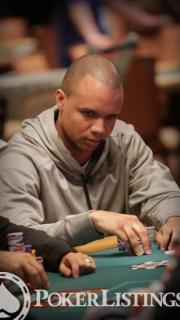| Name | Doyle Brunson |
|---|---|
| Current Residence | Las Vegas Nev. |
| Born | Aug. 10, 1933 |
| Birth Place | Longworth Texas, US |
Born August 10, 1933, in the midst of the
There, he studied education and was drafted by the NBA's Minneapolis Lakers. Though a knee injury - which persists to this day - sidelined Brunson's career as a professional athlete, he completed his studies and graduated from university with an MBA in administrative education.
Meanwhile, Brunson helped pay for his education by playing poker games at colleges around Texas. By his account, Brunson learned the game quickly and used his observation skills to cash in. After graduating from university, Brunson took his one and only day job selling office equipment. His first paycheck seemed so paltry compared to his poker winnings, Brunson quit and became a professional player. That meant going underground.
At outlaw games, Brunson had to contend with police, cheaters and robbers; he once saw the player next to him shot and killed, and has looked down the barrel of a gun during an interrupted poker game.
In 1960, Brunson met Louise, the woman he would eventually marry after several years of courting and convincing her it would be fine to marry a professional gambler. Early in their marriage, Doyle was diagnosed with a cancerous tumor in his throat and the prognosis was grave marked card tricks: Doctors gave him several months to live as the tumor was spreading quickly toward his brain.
Ever the gambler, Brunson chose to try a risky surgery as his last hope. When all was said and done, he was pronounced cancer-free. The news couldn't have come at a better time as Louise was pregnant with their first child and Brunson needed to head back out on the poker trail to start earning money for his family, which quickly grew to include two daughters, Doyla and Pamela, and son Todd, who is also now a professional poker player.
Brunson continued to support his growing brood playing and winning on the poker circuit, where he eventually met his mentor Johnny Moss as well as future partners Amarillo Slim Preston and Sailor Roberts. The men toured Texas, winning big money and earning a reputation for being nearly unbeatable high-stakes poker players. The trio eventually disbanded after losing their six-figure bankroll in Las Vegas, but Brunson hadn't lost his love of poker.
After wearing out his welcome in Texas, Brunson packed up his wife and their four children and moved to Las Vegas where poker was legal. By 1976, he had won his first World Series of Poker title, which he followed up with a second win in 1977. The two championships have forever branded the 10-2 Hold'em hand a "Doyle Brunson" because he took both championship games with a full house - tens full of deuces.
Brunson made his mark again in 1978, by penning the book Super/System, considered a definitive guide to poker. Since then he has also authored Super/System 2; a book of memoirs; and a book about the greatest hands he's ever seen.
In 2005, he earned his tenth World Series of Poker bracelet, a record he shared with Johnny Chan.
Solidifying his place in poker history, he also has a World Poker Tour event in his name. The Doyle Brunson North American Championship is the main event of the Five Diamond World Poker Classic at the Bellagio, where Doyle is often seen playing in the biggest cash games around. The championship is the second largest tournament by entry fee on the WPT with its $15,000 buy-in, second only to the $25,000 WPT Championship.
Success at the tables and legendary status haven't kept Brunson from expanding his horizons as well. He owns and endorses an online gaming site, DoylesRoom.com, which made headlines in 2006 when the U.S. Securities and Exchange Commission announced it was investigating the operation.
Now well into his golden years, Brunson is as busy as ever and, by his account, still winning more than he loses. From humble beginnings to one of the most influential forces in poker today, Brunson means it when he says, "A man with money is no match against a man on a mission."
Trivia
- Holds 10 gold WSOP bracelets, a record he shares with Johnny Chan
- Won his first two World Series of Poker events with a 10-2 hand
- Drafted as a young man to play for the Minneapolis Lakers, a former NBA team
- Has nearly $5 million in tournament winnings
- Authored Super/System, often called the poker bible


